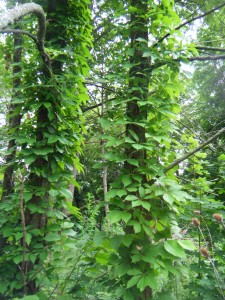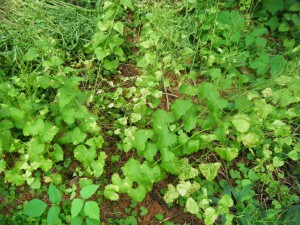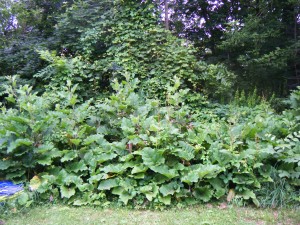It’s important to keep in mind that invasive species are often exotic species brought into the landscape by people for aesthetic, agricultural, or industrial purposes. Landscapers have a responsibility, both to their clients and to the communities in which their clients live, to choose plants wisely and to guard against unintentional release of invasives that can throw off the local ecological balance.

Native species can also be invasive. Landscapers often choose Virginia Creeper as a shade groundcover. But under the wrong conditions, the vine can engulf and out-compete mature trees.
More often than not, landscapers are faced with the problem of invasive plant removal. Many exotic species used in landscaping do not spread. But most landscape professionals have had to cope in one way or another with exotic invasives. Without proper maintenance, clients can lose a significant investment in landscaping to a few stray Norway Maple seeds or to a persistent patch of Garlic Mustard.

Garlic mustard flowers will continue to develop and produce hundreds of seeds even after the plant has been pulled and thrown onto the compost pile.
Whether you are dealing with a lawn, woodlot, pond and wetland, or mixed site characteristics, without management and removal an invasive species can out-compete native plants in the landscape along with ornamental plantings. Invasive species tend to also compete with one another; for example, Japanese Barberry, Multiflora Rose, and Japanese Honeysuckle all tend to do well under the same conditions and are often found together, each trying to dominate the landscape. Removal of multiple species of invasives often requires herbicides or, in an organic system, a good shovel and a lot of sweat equity.

The Edge Effect can backfire where invasives are present. Pictured here are Burdock, Fox Grape, Norway Maple, Sumac, and Japanese Barberry all thriving at the edge.
With knowledge, proper management plans, and client education, landscapers can have significant impact in control of invasive species on-site, in the local community, and at a regional level.

